
Andrew J. Liptak: When did you first read science fiction, and what about it made you stick with it?
KSR: I began reading science fiction when I went to college, at UC San Diego in the early 1970s. I had grown up in Orange County California, and seen an agricultural community (orange groves) get turned into a giant urban sprawl very quickly, and when I ran into science fiction it seemed like a realism to me; it expressed things I had seen with my own eyes. That made it very appealing and I was instantly won over. That it was the time of sf's New Wave made it extra exciting.
AJL: What were some of the New Wave books that you read that excited you the most?
KSR: Joanna Russ's AND CHAOS DIED and THE FEMALE MAN, J.G. Ballard's disaster novels especially THE CRYSTAL WORLD, Samuel R. Delany's THE EINSTEIN INTERSECTION, Thomas Disch's CAMP CONCENTRATION, Ursula Le Guin's THE LEFT HAND OF DARKNESS, Gene Wolfe's THE FIFTH HEAD OF CERBERUS, and many others.
AJL: What are some of the authors who have inspired you and your books?
KSR: All of the writers in the previous list, plus Stanislaw Lem, the Strugatski brothers, Philip K. Dick, also many non-science fiction writers such as Joyce Cary, Peter Dickinson, Cecelia Holland, Virginia Woolf, and so on. I like a lot of writers and then go from there.
AJL: Your background is a bit different from other science fiction novelists: you earned your PhD in English. How has that shaped how you put together your novels?
KSR: I love reading and it is for me a kind of religion in that it is the source of my values. So it was natural to become an English major, and I am still always reading fiction. I like the history of the novel and feel that early novels like Defoe's Moll Flanders or Sterne's Tristram Shandy are among the genre's masterpieces, so I am always reading backward in the history of the novel and finding new treasures. When it comes to how that applies to my own novels, I'm not so sure how it works; it's very indirect. I like reading all kinds of literature, and literary criticism too, but how all that influences me when I write my own books is mysterious to me. Mostly I am trying to make scenes work and then put together stories. It's very immediate, and what I've read previously seems distant in those moments of creation. But I'm sure it is helpful even if I don't know how.
AJL: Your doctoral thesis was on Philip K. Dick’s novels: has his works had a particular impact on your own writing?
KSR: There are two main aspects to it, I think. One has to do with form, and involves Dick's use of the roving point of view, in which different chapters are narrated from the point of view of different characters; he did that a lot, and I have too. Then in terms of content, I like how he always featured ordinary people caught up in large historical situations, from a leftist perspective. I've done a lot of that too.
AJL: Tell me a little bit about your Mars trilogy: When did you first realize that you wanted to write about Mars?
KSR: I knew it when I saw the photos from the Viking orbiter, which included stereoscopic 3-D photo pairs where you could see what the landscape might look like, somewhat like early primitive versions of Google Earth. These were NASA publications that came out in the late 1970s. At that point I had started writing science fiction and had been hiking in the Sierra Nevada of California for some years, and so I began by writing stories about hiking around the amazing Martian landscape, which really was something quite new, revealed to us at that level of detail for the first time in 1976. At that point I also realized that only by terraforming Mars could you actually backpack there; and there were scientific articles coming out about terraforming Mars in those years, so I paid attention to those, and thought, that would be a good story to tell. I spent about ten years thinking about that and collecting research materials.
AJL: How much of an impact did those pictures from the surface of Mars have on science fiction fans, do you think?
KSR: It's hard for me to judge or say for sure, but I suspect they were viewed by all science fiction fans with great interest, as the community already had a strong feeling for Mars as an sf landscape, and the "dry Mars" that turned out to be the real one was portrayed by Bradbury and Clarke, so it was no great surprise or disappointment. Possibly there was a feeling of "we knew that, but it's nice to see the details now."
AJL: You were seventeen when the Apollo 11 lunar mission landed on the moon: what were your memories of that?
KSR: I was with my parents in Florida where my dad worked in summers at Eglin Air Force base, and I recall watching the landing on TV and feeling amazed.
AJL: Do you see any differences in how the science fiction community responded to Apollo 11 vs. that first Viking lander?
KSR: Again, hard to speak for the sf community, and I only got to know it personally in the early 1980s, so this is guesswork or historical, but I think the moon landing with people was world history, whereas the Mars Viking thing was less huge, more a space science specialist thing, although it's also true that anything to do with Mars gets a big response from the general public.
AJL: The Mars books cover a lot of ground: colonization, politics, corporations, environment. What particular challenges did you have when assembling the books?
KSR: It was a long project, but I wasn't doing anything else in those years except take care of my family as a house husband, so I had the time and the focus to go long. The challenges I guess involved keeping a sense of the flow of the book, and keeping the balance between the various point of view characters; and then above all, figuring out what happened next in the story, why and how. It was basically the usual novel writing problems, but extended over a long time and a lot of pages: six years, 1700 pages.
AJL: What was the writing process like? In my copy of Red Mars, your blurb mentions that you were hard at work writing Green Mars. When you wrote the first book, did you know what would be in store for Book 3?
KSR: I knew all along that I wanted to tell the story of the terraforming of Mars, and the creation of a new human society there, multicultural and in certain ways kind of utopian compared to now. So I knew that much, which was enough to guide me through the process of figuring out what should happen along the way. When I started writing the book, in 1989, I quickly realized that it was going to be a very long book, and my agent and editor of that time said to me, Stan, we call that a trilogy; and so I shifted the title from Green Mars, which was my idea for the title for the whole book, to Red, Green, and Blue Mars.
AJL: What was the publication process like, and how did you integrate any new scientific information about Mars into your books?
KSR: Publication was straightforward, led by my HarperCollins editor Jane Johnson in England, who always got the books out first, and encouraged me greatly throughout the process; a driving force. There was not much new information about Mars in the years I wrote, but what information there was came out packaged in a huge anthology from the U. of Arizona called MARS which came out in 1992 and gave me new things to say in GREEN and BLUE MARS. It looked like I had saved good things for later in the trilogy, but actually I learned them while writing and did not know them before, so that was a nice thing to have happen.
AJL: What did you learn from your California Trilogy that you applied to writing your Mars trilogy? What did you learn from your Mars books that you applied to the ones that came after?
KSR: Three Californias is not a trilogy in the same sense as the Mars trilogy or the 40-50-60 trilogy. The latter two are really just long novels in three volumes, but Three Californias is a triptych of three novels each portraying a different future for California and the world. So, what I learned from those three novels is that I could write a novel, and in writing a novel I was helped by moving around in point of view, from one character to another, so that the reader got different perspectives on the characters and the story. Those lessons I applied to the Mars trilogy, although everything was then done on a larger scale. Also, writing the Three Californias taught me there were things I wanted to do differently in the Mars book; I wanted to do more exposition, to talk about history directly, to tell a global story. So there were negative lessons as well as positive lessons, you could say.
From the Mars trilogy, I learned that I could use a similar format to tell a global story that covered centuries, which helped me hugely when I wrote The Years of Rice and Salt. After that the help was more indirect. I think I could say the Mars trilogy made me fearless. After doing that, I was willing to try anything.
AJL: Your fourth Mars book is a collection of short fiction: how did that book come to be?
KSR: I wanted to create a context for two earlier Mars stories I had published, "Exploring Fossil Canyon" and "Green Mars," what I called my Roger and Eileen stories, and these were a different Martian history than the one in the trilogy, so I started thinking about alternative Mars and how I could portray a kind of cloud of alternatives around my trilogy, along with some "secret histories" about relationships and so on, that had not been revealed in the trilogy but would help to explain some things. Also more folk tales, some new stories, some poems, the Martian constitution, etc. It became a true anthology and companion volume, not straightforward but I hope interesting if one liked the trilogy. It helps make that book more interesting if you've read the trilogy first, for sure.
AJL: Critics have noted that one of your recent books, 2312, bears a number of similarities to your Martian books: what potential do you see for humanity in the solar system?
KSR: Well, that's a good question, and I guess it takes all my books to answer it. I've been thinking for a long time, since Icehenge and The Memory of Whiteness, books from the early 1970s and early 1980s, that the solar system is our neighborhood, so to speak. We can reach it, move around in it, establish scientific stations on various planets and moons in it. It's a resource, and a place to learn things about how to live on Earth. It's spectacular real estate. Earth will always remain our home and our main place. It might be best to think of the solar system in the way we think about Antarctica. It's there, it's interesting and beautiful, it can help us learn how to live; it will never be our main place. Then beyond that, meaning centuries from now, it could be that Mars in particular might become an even more human place, a second home. But it won't happen unless we learn how to live on Earth sustainably.
AJL: I attended a NASA conference where a speaker noted that modern spaceflight and exploration isn’t like the US expansion into the west, but more like the early polar exploration missions of the 1800/1900s.
KSR: I agree with that. It's not the wild west, but Antarctica, that provide the more accurate analogies. It's like a super Antarctica up there, even colder, more dangerous, more interesting, etc.
AJL: Mars is one of the first destinations for science fiction, ever since someone misinterpreted the word 'Canali'. Wells, Burroughs and Bradbury have all set stories on the red planet: did this figure into how you developed your own trilogy?
KSR: Mars is a great science fiction story space. In the way they talk about "The Matter of Britain" when they talk about all the Arthurian legends, sf has "the Matter of Mars." In each generation since the time of Percival Lowell, the Mars presented by the scientists has been taken up by sf writers to become a new story space. All that got hugely sharpened in focus in 1969 and 1976, when Mariner and Viking gave us the planet in so much more detail than we had ever had before. But the fundamental truths of the human relation to Mars were mostly set out by Bradbury's Martian Chronicles: the Martians are us, we will change there, the ghosts of our stories about the place will always haunt us when we really get there. These are permanent truths, and things I wanted to join and emphasize in my own Mars novel.
AJL: Do you pick up other books about Mars? Andy Weir's debut seems to have become extremely popular (Ridley Scott is set to start filming an adaptation soon.)
KSR: I have not read the Andy Weir book though I hear good things about it. "Robinson Crusoe on Mars" is a good story, first told around 1903, but bringing it up to date with the latest knowledge about the planet and our space program is an excellent idea.
AJL: There have been plans over the years for various adaptations, and last I saw, Spike TV is looking to adapt the trilogy for a television series. How is that progressing? Does it stand a better chance as a television series now that shows such as Game of Thrones have proven to be successful?
KSR: I don't know enough about TV to answer these questions, but I have the sense that TV in general is on the look-out for stories that are long and complex and historical in nature, partly because of Game of Thrones, so in that sense I think the time is right for filming a TV series based on my Mars trilogy, and Spike TV seems committed and serious. So it seems very possible that it might happen. That would be great, but for the most part I am just cheering on the people involved with this process.
AJL: Did you watch the Curiosity Rover's landing? What are your thoughts on the current efforts to explore and reach Mars?
KSR: I love Curiosity and all the other robot landers on Mars. The clarity of their photography is just mind-boggling to me, after 25 years of looking at fuzzy Viking images. It's like getting glasses for the first time. And the planet is looking more and more beautiful. So I follow all that with great pleasure. And I see NASA is again proposing that we go there with human astronauts, a very exciting idea. I think it can stand for our utmost reach outward, the hardest technological thing that we can do in terms of travel, in our time. It's not the solution to creating a sustainable civilization, which is our first priority, but it's very exciting and inspirational. A beautiful project.
AJL: I came across a video recently called Wanderers (http://vimeo.com/108650530), which the filmmakers directly cite your books, and they really speak to the beauty of the potential for humanity in space. Do you think we have the ability to leave behind our darker elements if/when we do venture onto other worlds?
KSR: Many have noted that this beautiful little film seems to be illustrating scenes from my 2312 and Mars books, and I would agree. Some scenes portray things written only in my books, such as surfing the rings of Saturn, etc. It's a great tribute and very beautiful.
AJL: What can we expect from your upcoming novel, Aurora?
KSR: I've tried to do my usual thing, and write about the idea of going to a nearby star system, in this case Tau Ceti, which has an array of planets we know about, and in doing so describe what would really happen in such an attempt. So it is a novel about coping with problems, and committing to a giant adventure based on this old and great science fiction vision, the multi-generational starship, and the arrival at a planet new to humanity.
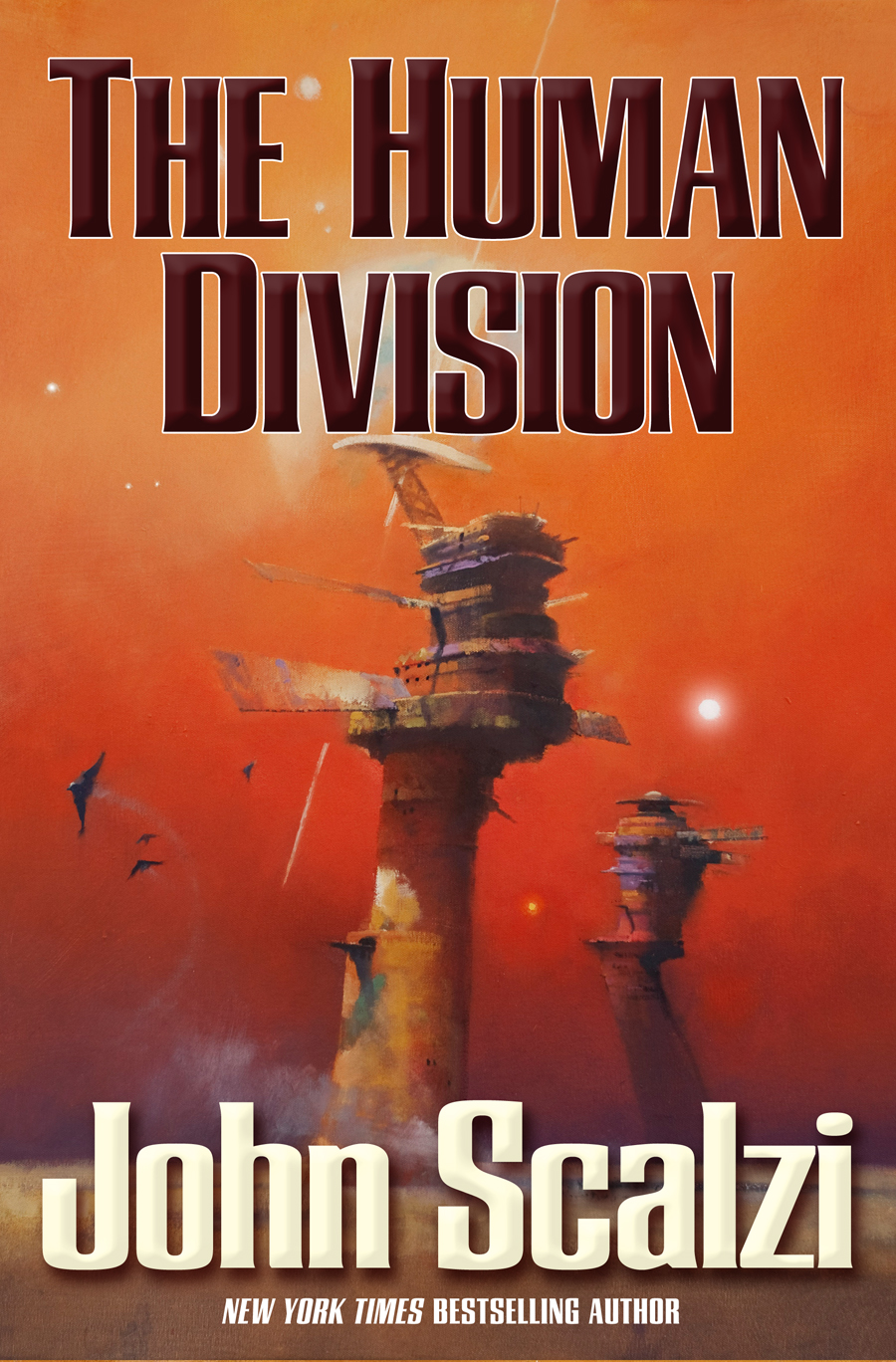

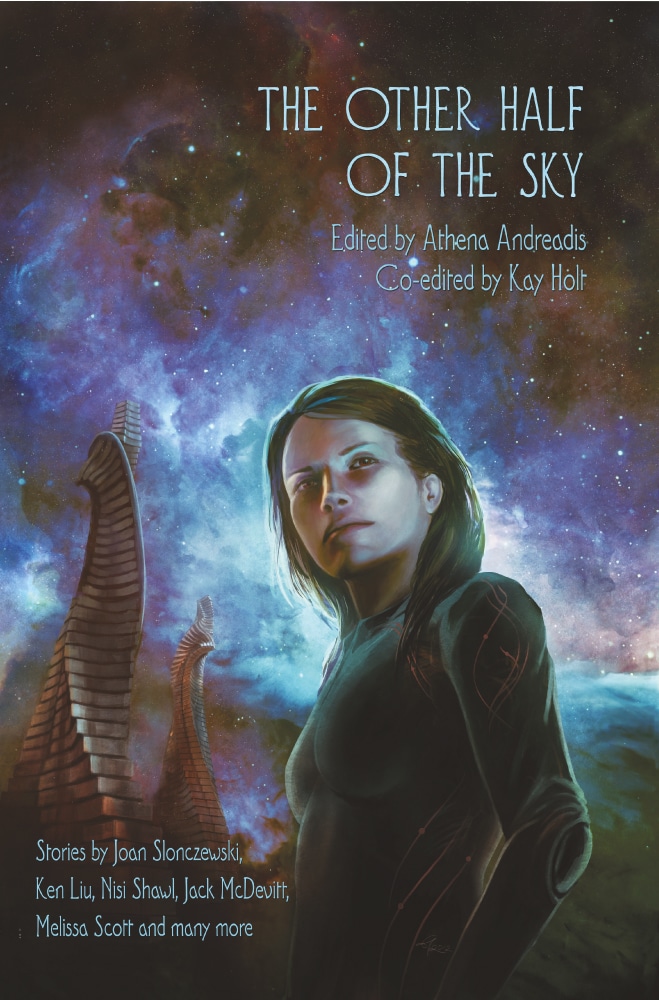
 There's always a rush to try and get to the bottom of where science fiction comes from. I think it's a bit of a losing proposition, because of how murky everything gets. You can, however, pull out a lot of authors and point to them as forerunners. Case in point, Margaret Cavendish, who wrote a novel called The Blazing World, which accompanies some of her own scientific commentary.
There's always a rush to try and get to the bottom of where science fiction comes from. I think it's a bit of a losing proposition, because of how murky everything gets. You can, however, pull out a lot of authors and point to them as forerunners. Case in point, Margaret Cavendish, who wrote a novel called The Blazing World, which accompanies some of her own scientific commentary.

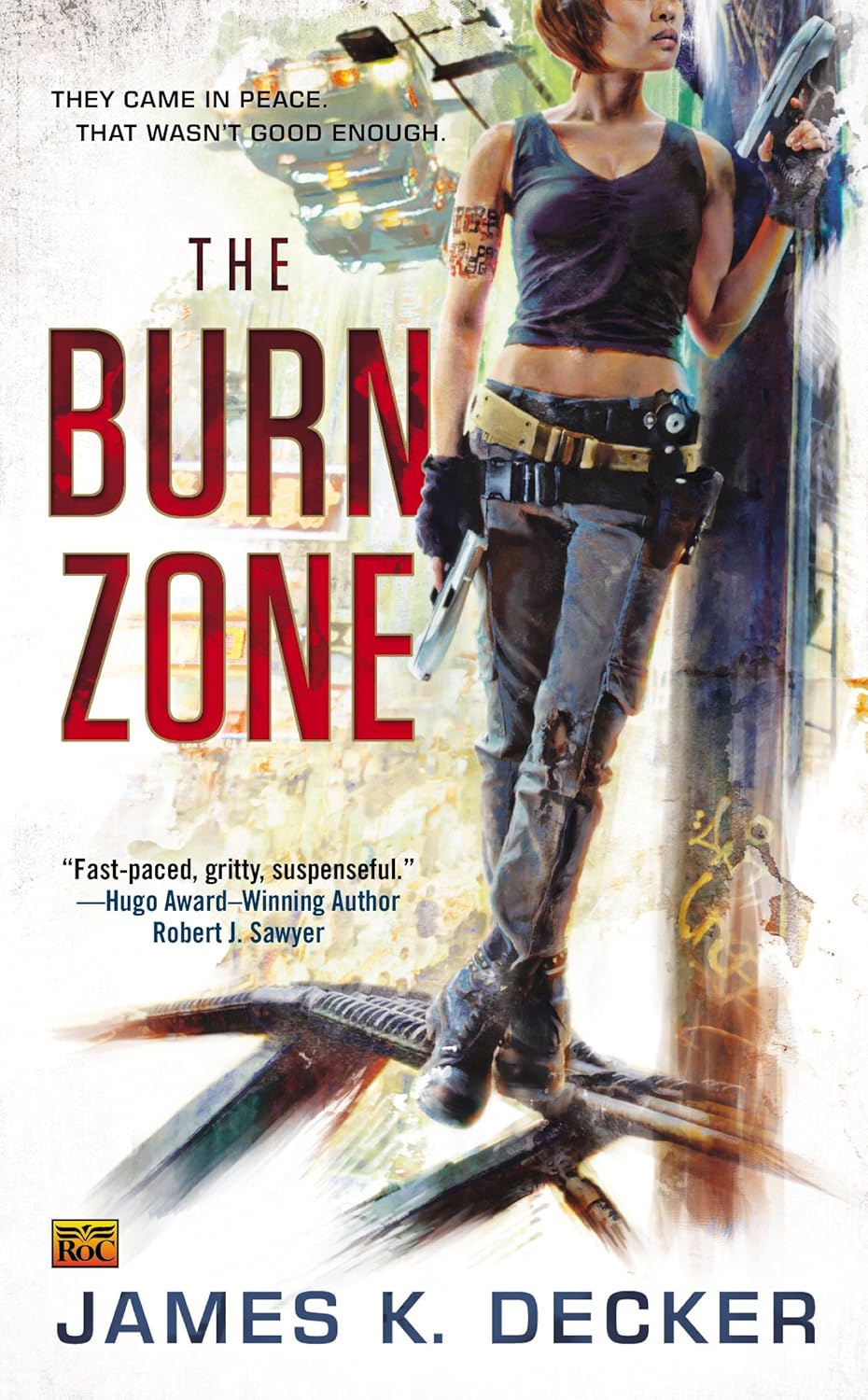
 While I've written about books and magazines for this column, there's other mediums where science fiction lives: television and film. I haven't talked about that much for the column (given that Kirkus Reviews is primarily a book magazine), but there's some fascinating times when they've crossed over. One such case is one of the first science fiction television shows, which caught my interest based on the authors who wrote for it: Asimov, Clarke, Vance, and others. The show was Captain Video and his Video Rangers, and it's a neat program that forms a solid branch from the literature world to the television world, helping to bring about other major television shows that followed.
While I've written about books and magazines for this column, there's other mediums where science fiction lives: television and film. I haven't talked about that much for the column (given that Kirkus Reviews is primarily a book magazine), but there's some fascinating times when they've crossed over. One such case is one of the first science fiction television shows, which caught my interest based on the authors who wrote for it: Asimov, Clarke, Vance, and others. The show was Captain Video and his Video Rangers, and it's a neat program that forms a solid branch from the literature world to the television world, helping to bring about other major television shows that followed.
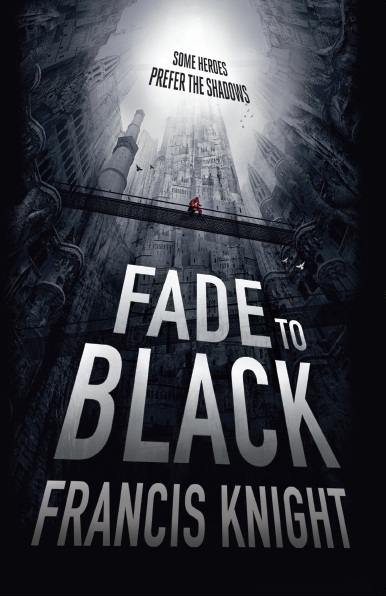
 My latest column on Kirkus Reviews combines a couple of things that I've been looking to talk about for a while now: how did major changes in the bookselling industry change how books were being written and sold to publishers?
My latest column on Kirkus Reviews combines a couple of things that I've been looking to talk about for a while now: how did major changes in the bookselling industry change how books were being written and sold to publishers?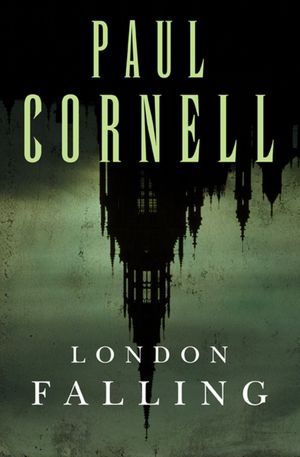


 Originally published to Geek Exchange.
Originally published to Geek Exchange. My latest post is up on Kirkus Reviews, this time pulling back from the trenches and looking at what my boss calls the 20,000 foot strategic picture. Throughout the column, I've largely looked at authors who've shifted the genre from point to point, but over time, I've started getting interested in the larger forces at play: the publishers and reading habits of Americans. As I work towards putting these columns towards a book, I've begun looking at some of the other influences outside of the arts world that have shaped SF.
My latest post is up on Kirkus Reviews, this time pulling back from the trenches and looking at what my boss calls the 20,000 foot strategic picture. Throughout the column, I've largely looked at authors who've shifted the genre from point to point, but over time, I've started getting interested in the larger forces at play: the publishers and reading habits of Americans. As I work towards putting these columns towards a book, I've begun looking at some of the other influences outside of the arts world that have shaped SF.
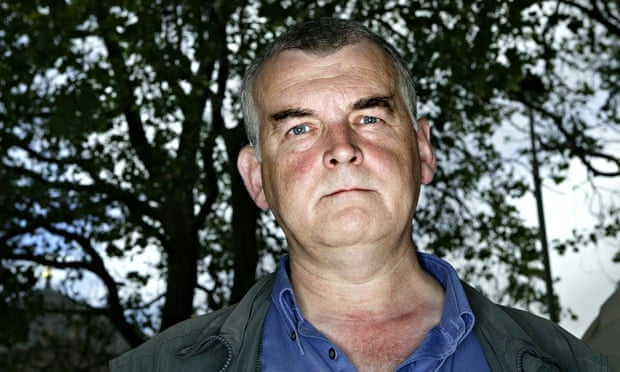 Recently, I wrote about Iain M. Banks for Kirkus Reviews. In conducting the research for that post, I spoke with one of his friends, fellow SF author Ken MacLeod, who graciously agreed to answer my questions. Here's our interview.
Recently, I wrote about Iain M. Banks for Kirkus Reviews. In conducting the research for that post, I spoke with one of his friends, fellow SF author Ken MacLeod, who graciously agreed to answer my questions. Here's our interview.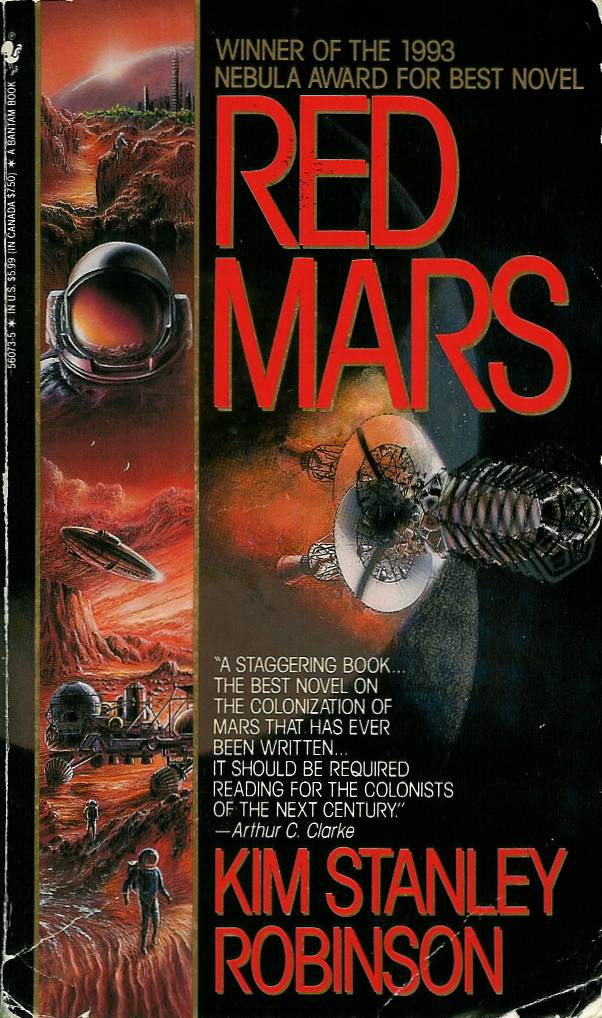 Throughout my years of stalking the science fiction shelves of bookstores and libraries, there's been a trilogy of books that's always caught my eyes, but which I never quite picked up to read. They were Kim Stanley Robinson's Mars trilogy, with its distinctive covers which matched the titles of the books. I had attempted to get into Red Mars over the years, but never got very far.
Throughout my years of stalking the science fiction shelves of bookstores and libraries, there's been a trilogy of books that's always caught my eyes, but which I never quite picked up to read. They were Kim Stanley Robinson's Mars trilogy, with its distinctive covers which matched the titles of the books. I had attempted to get into Red Mars over the years, but never got very far.